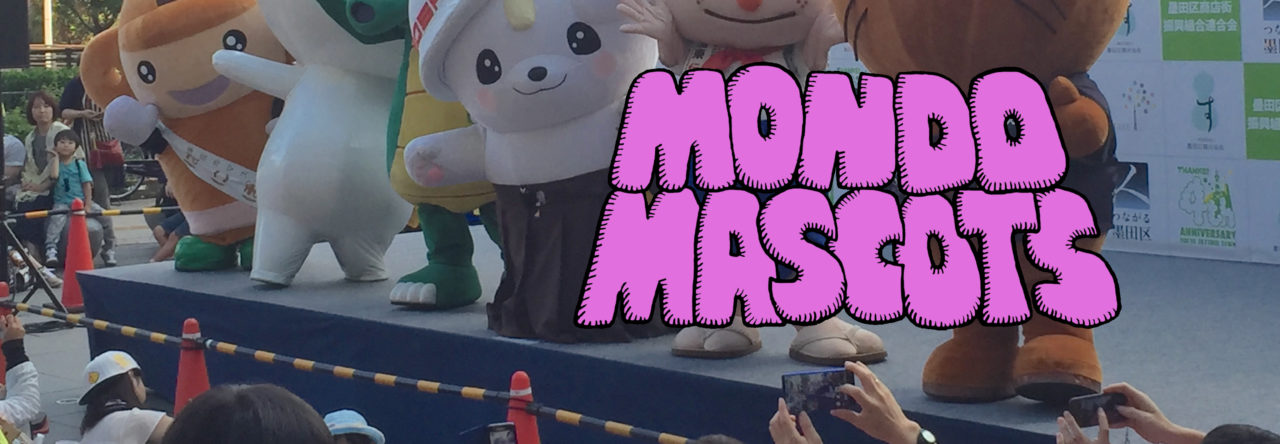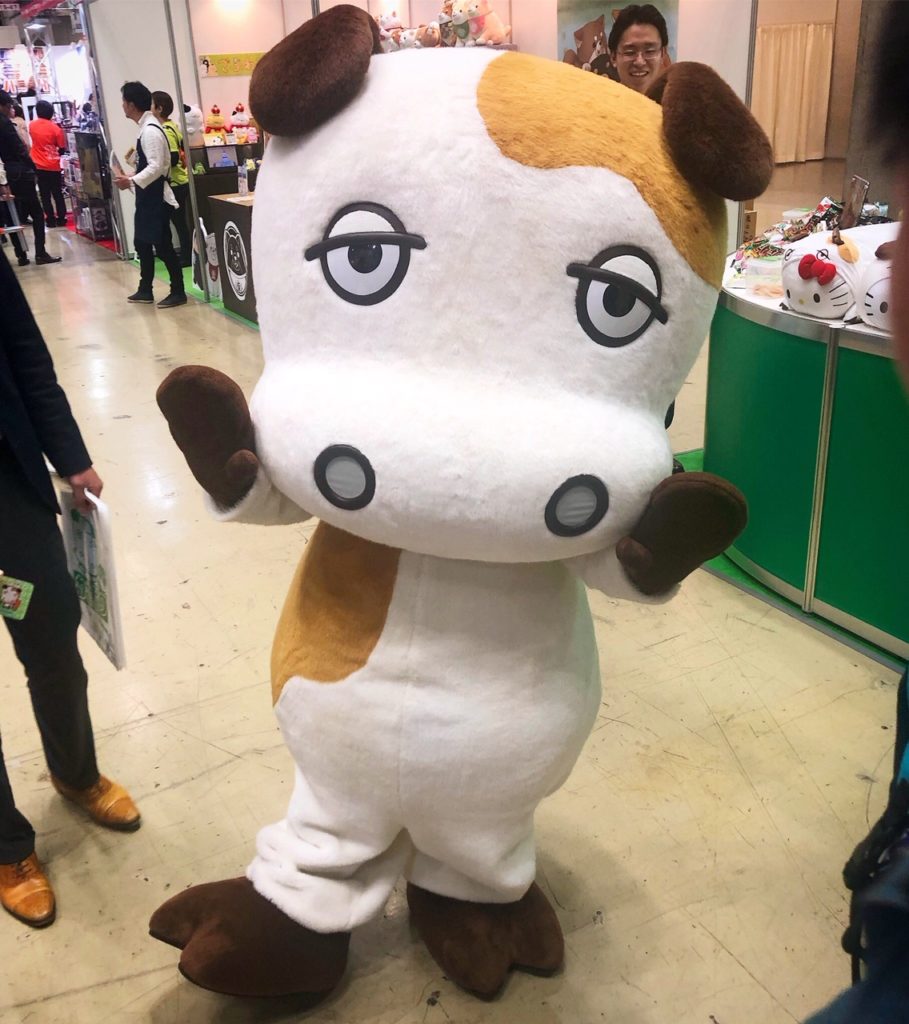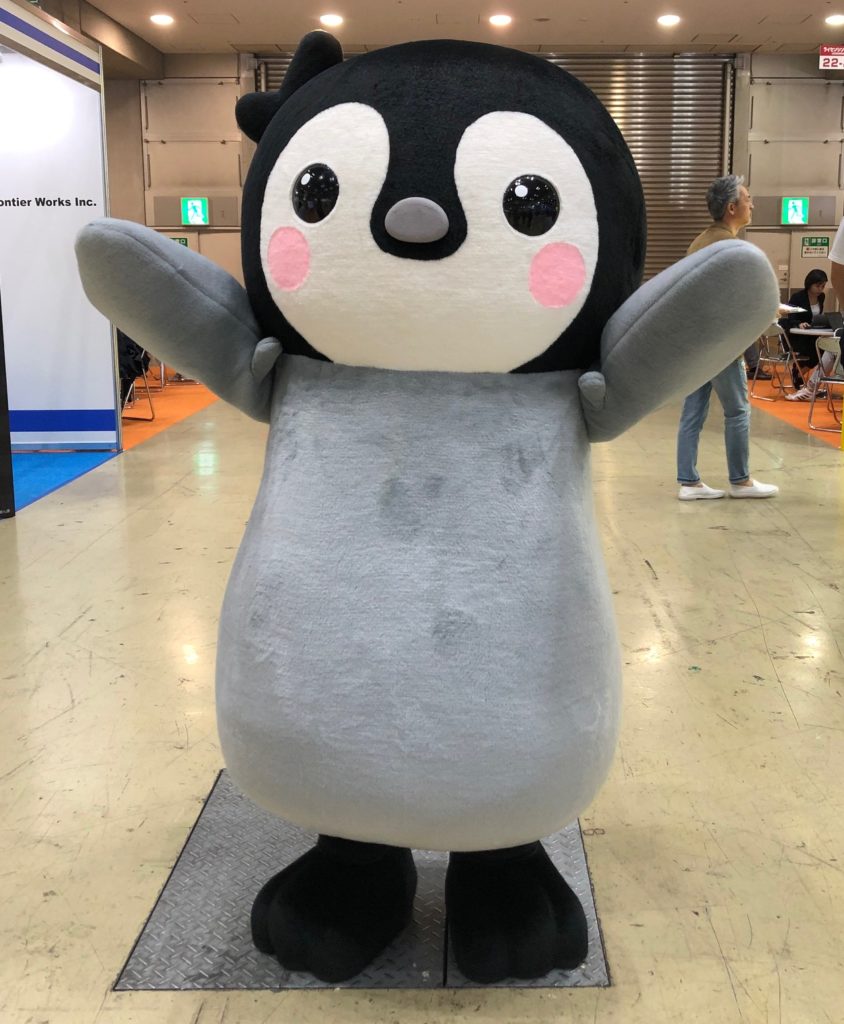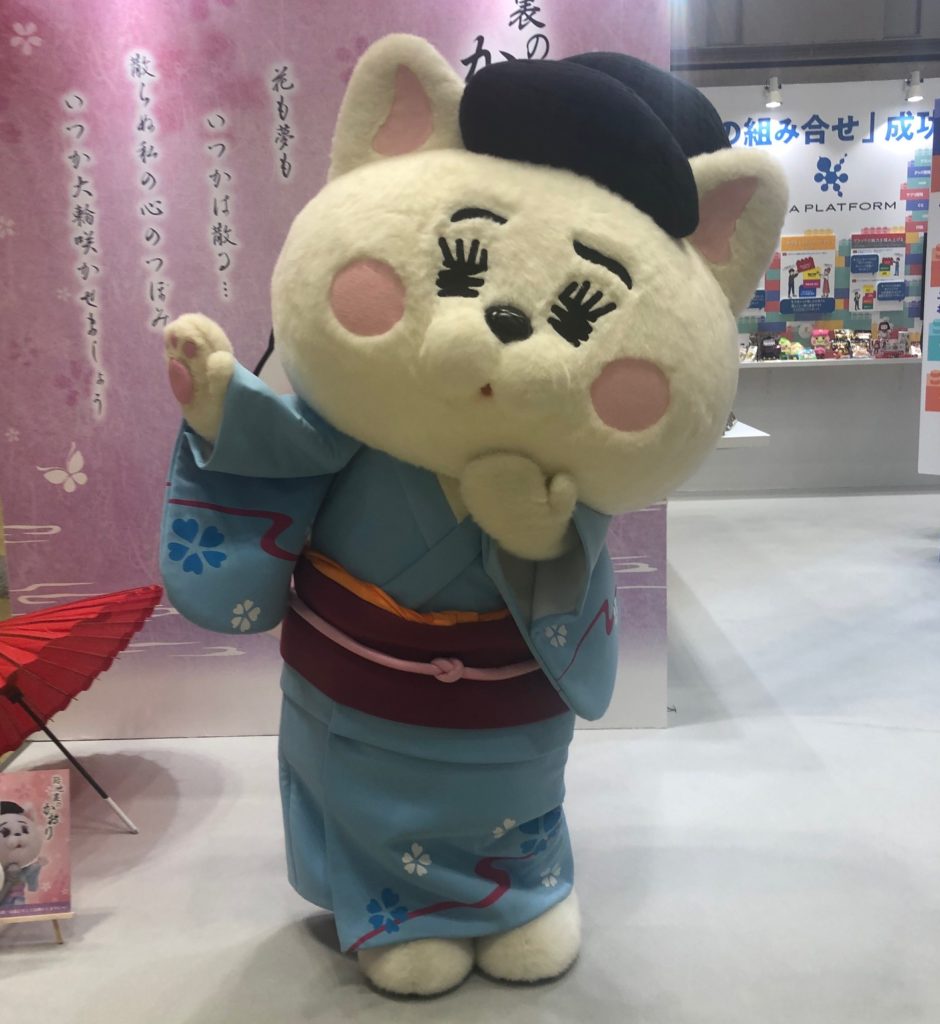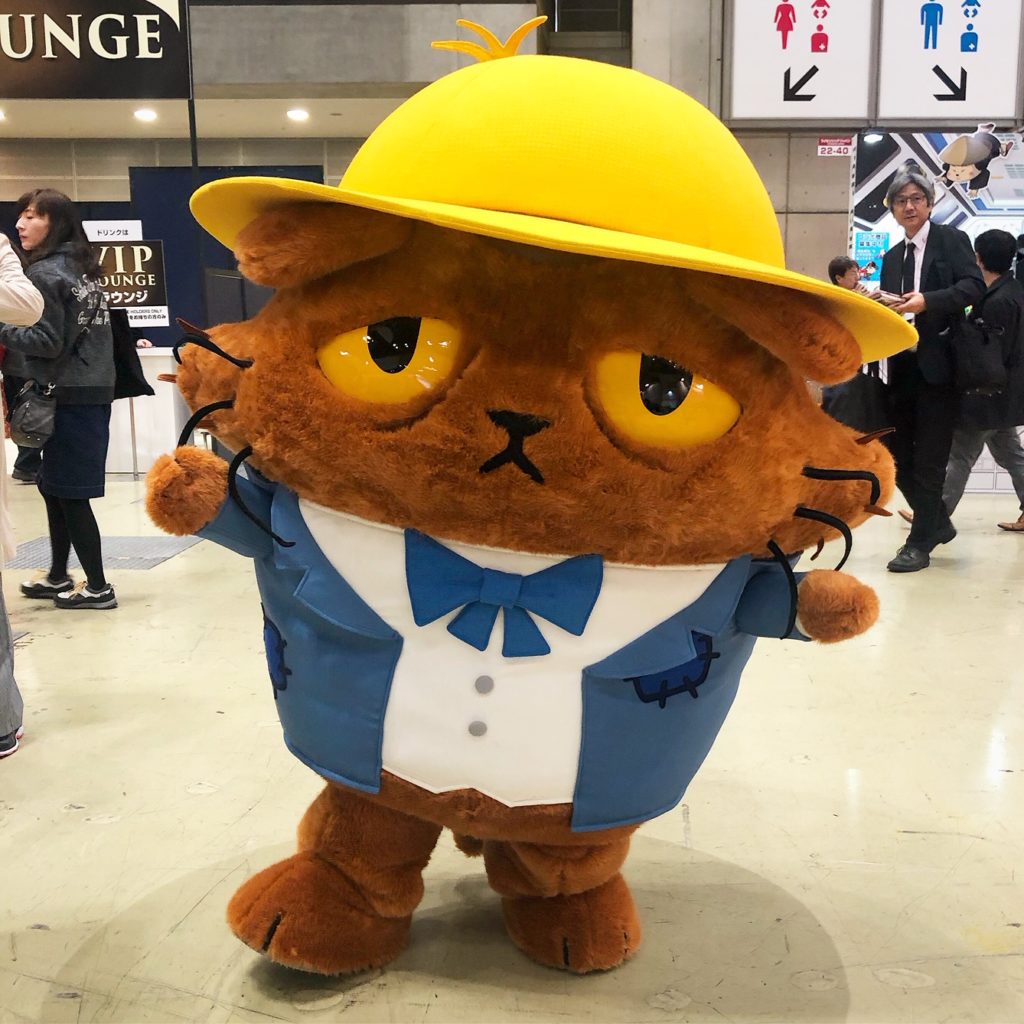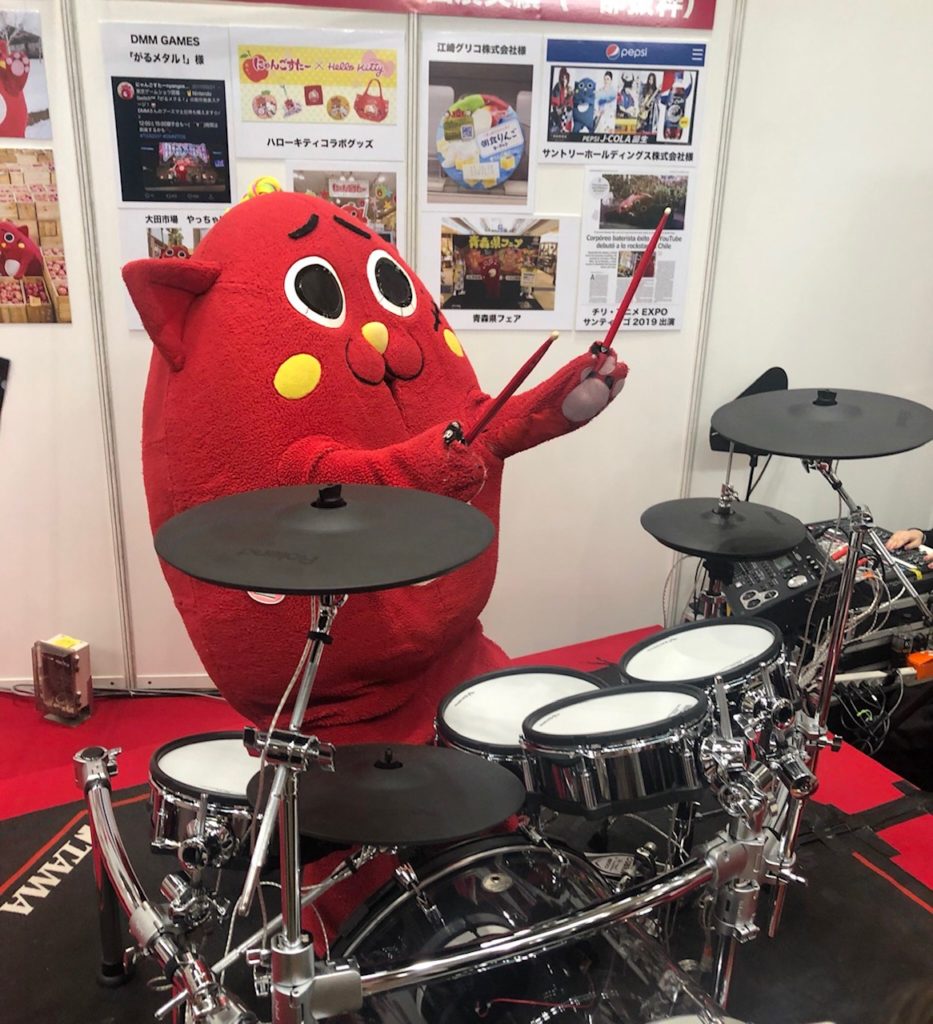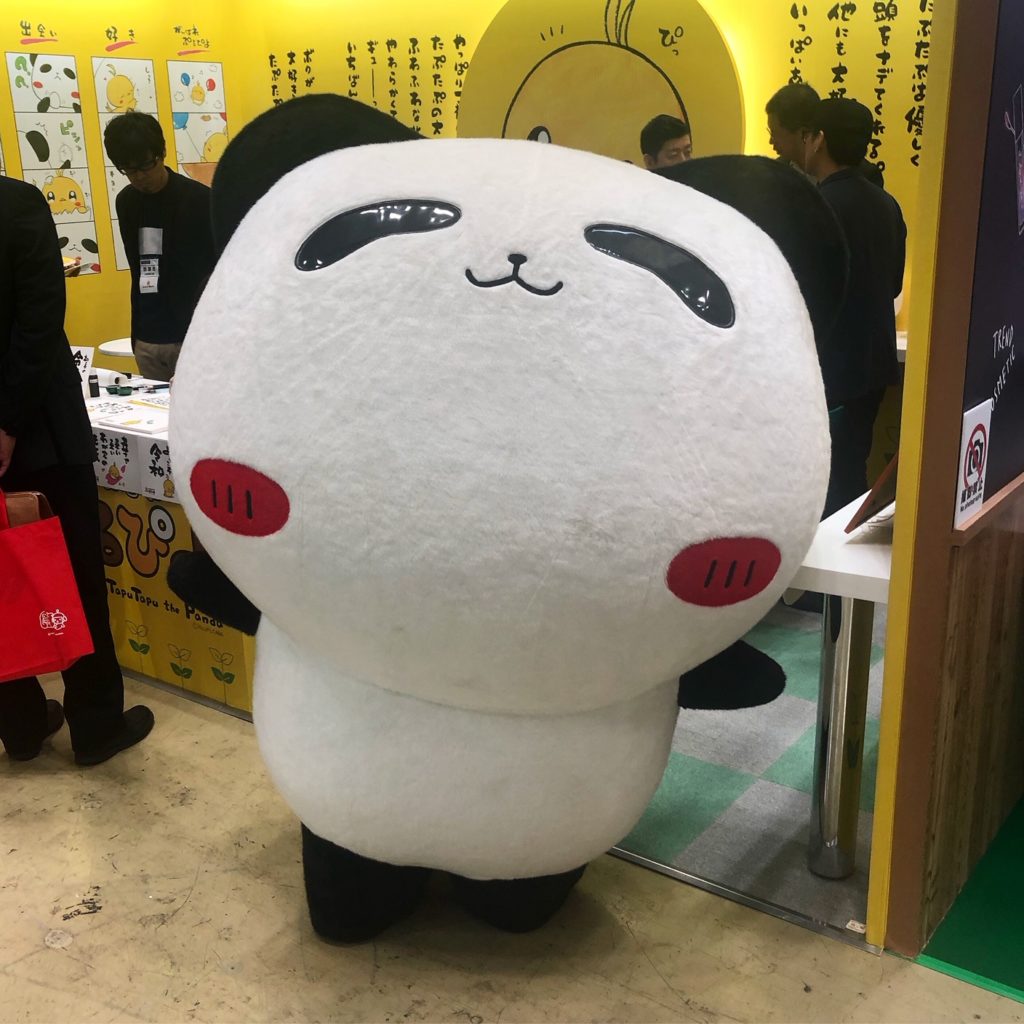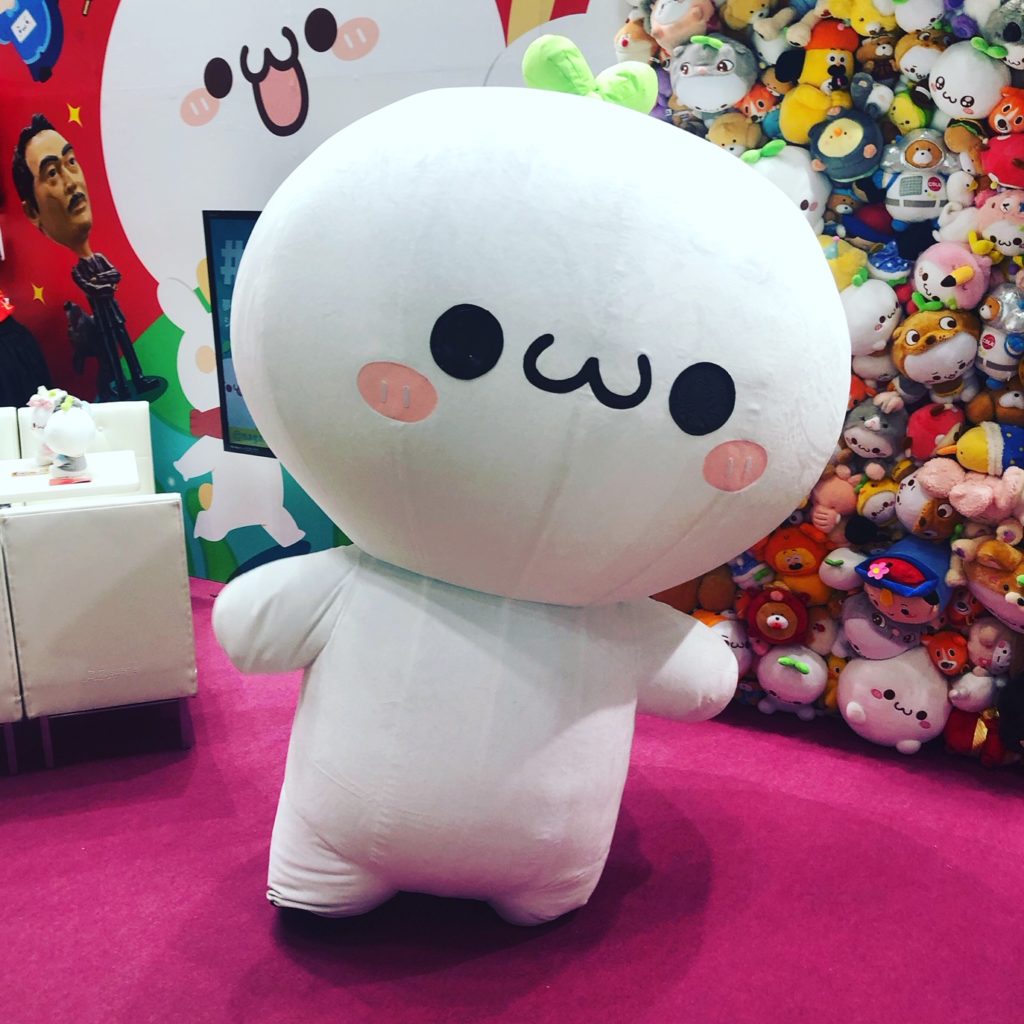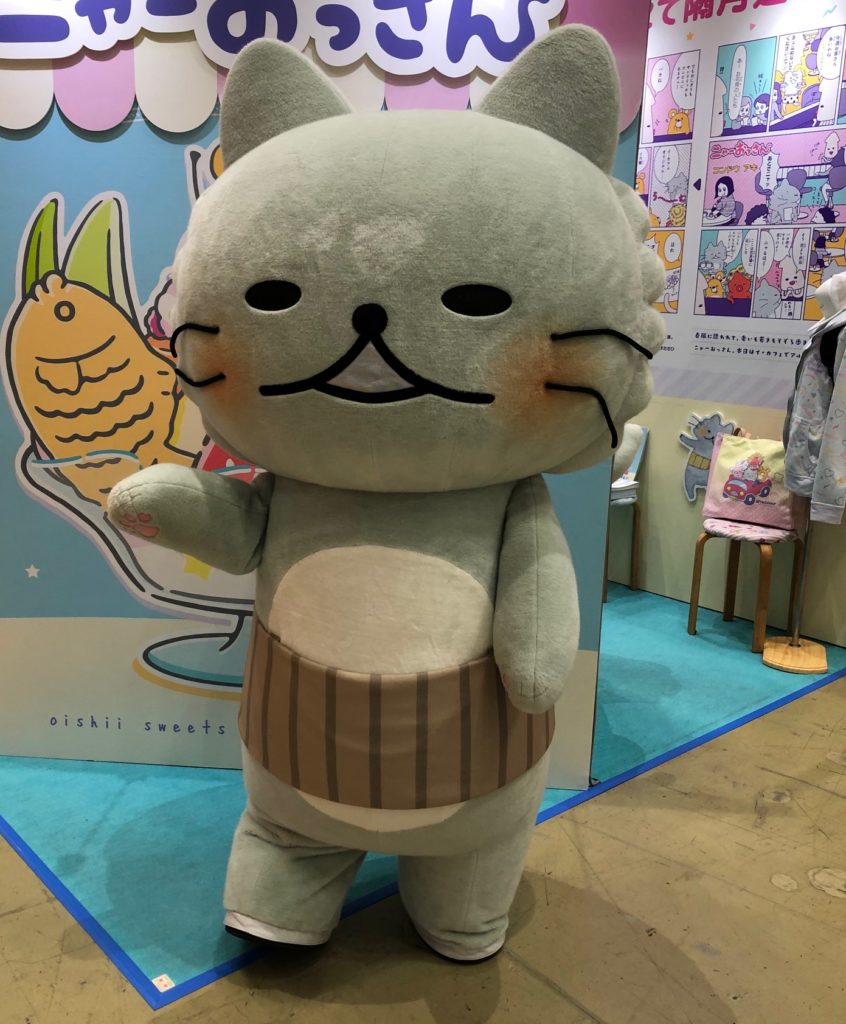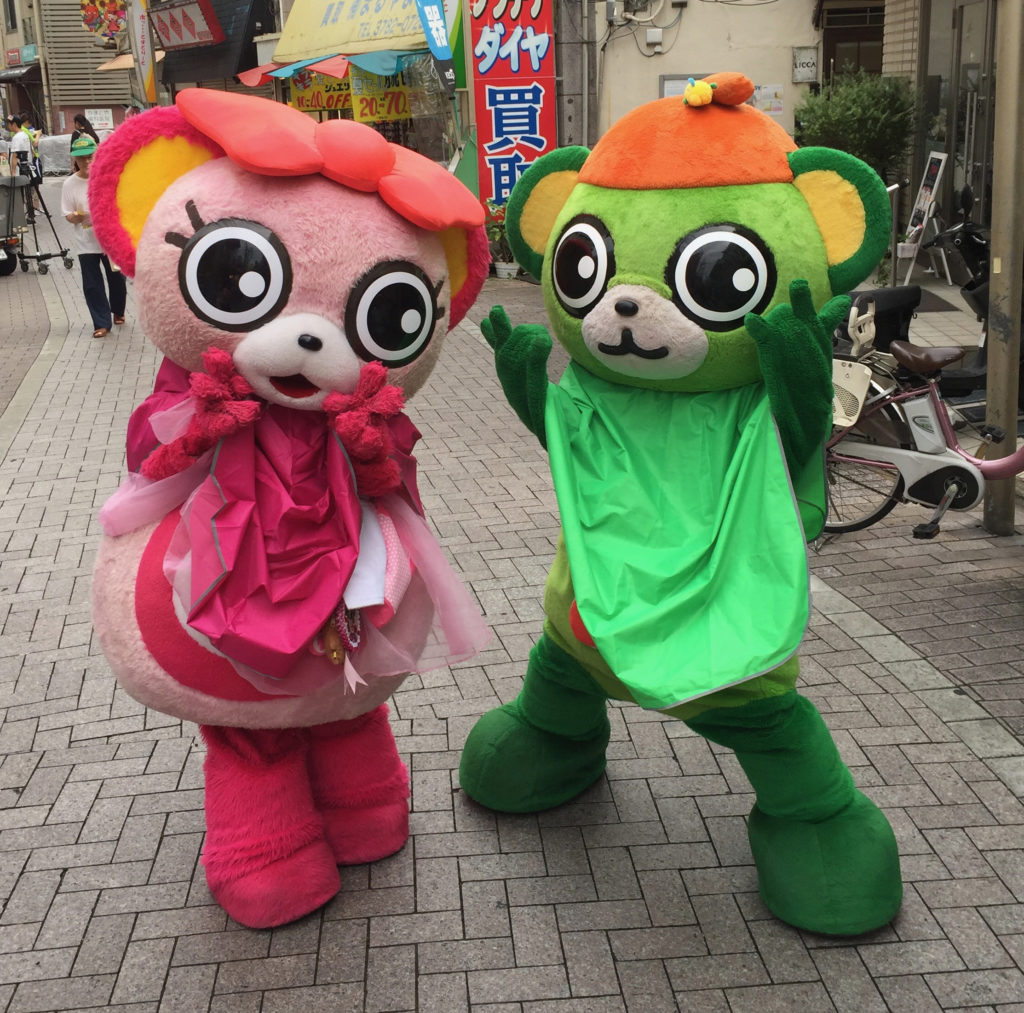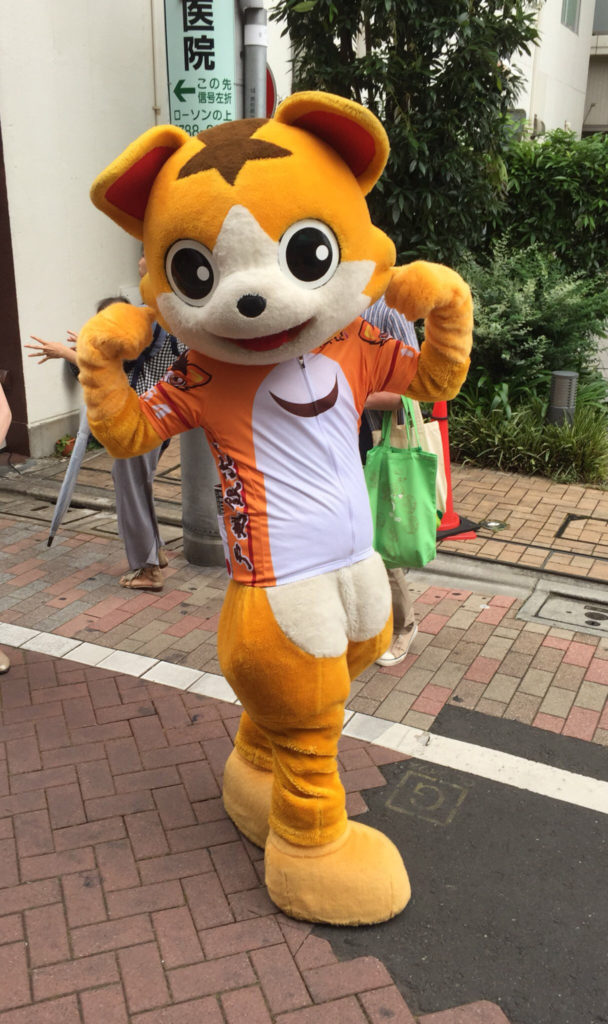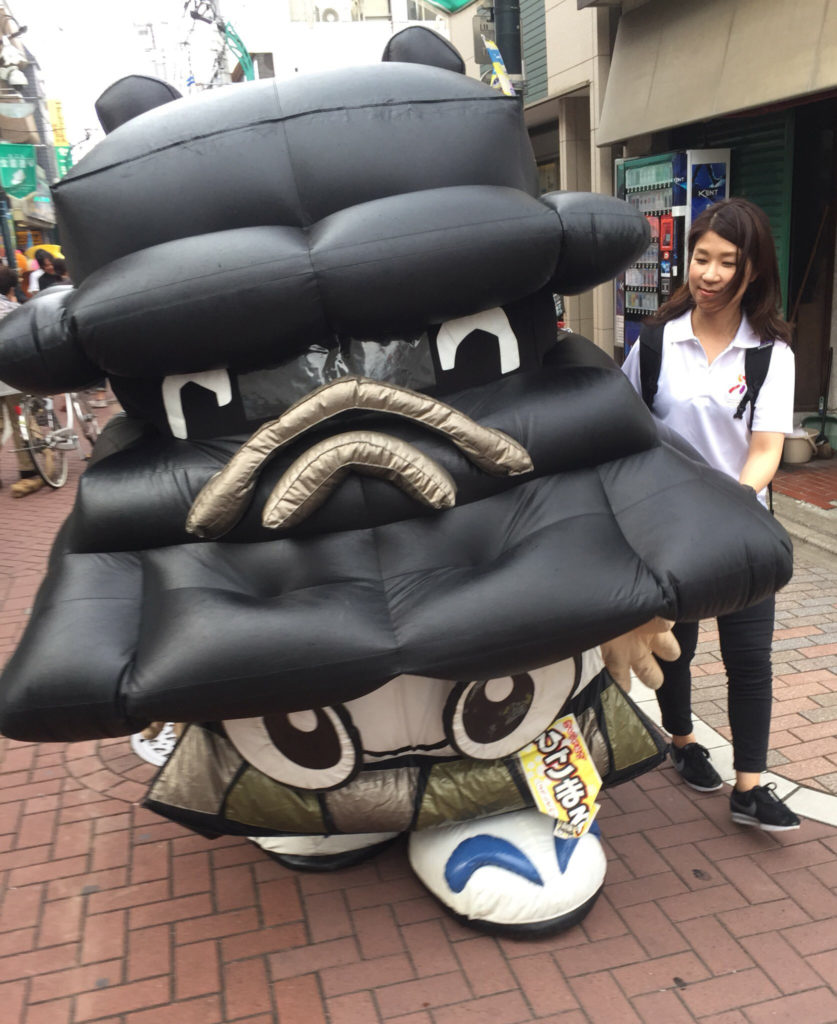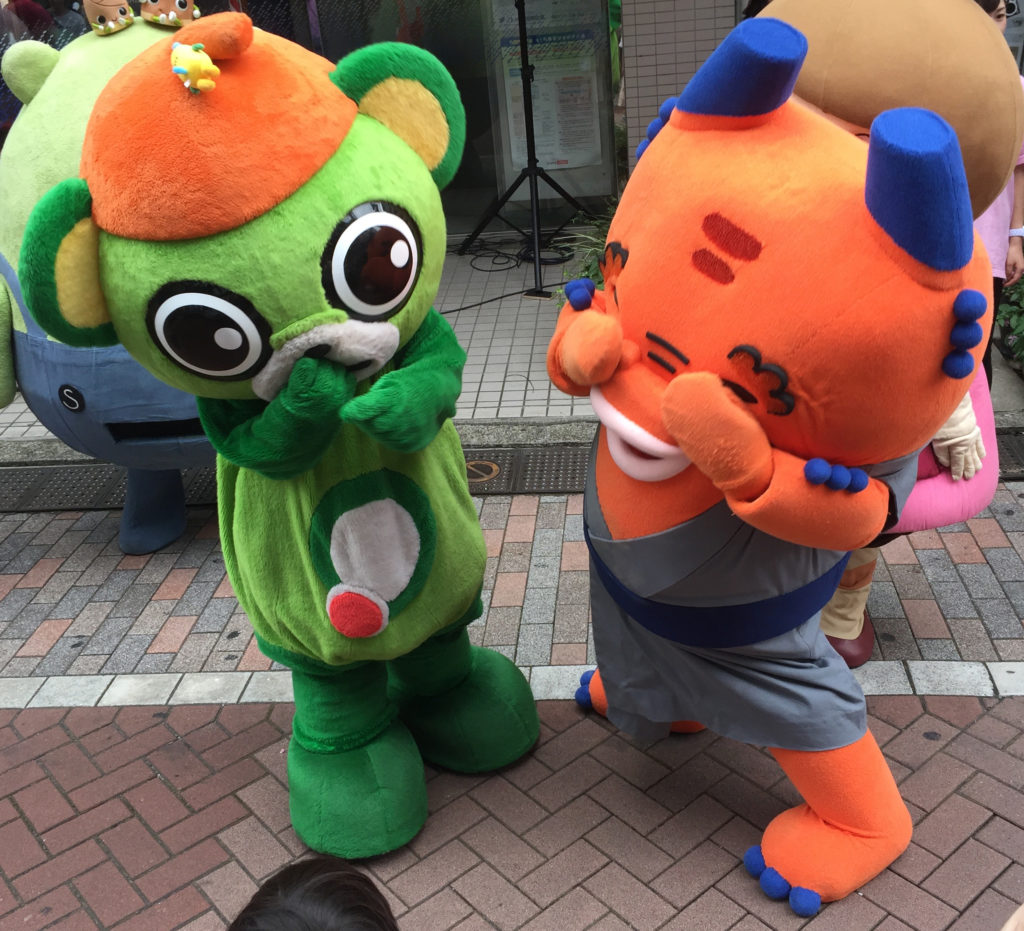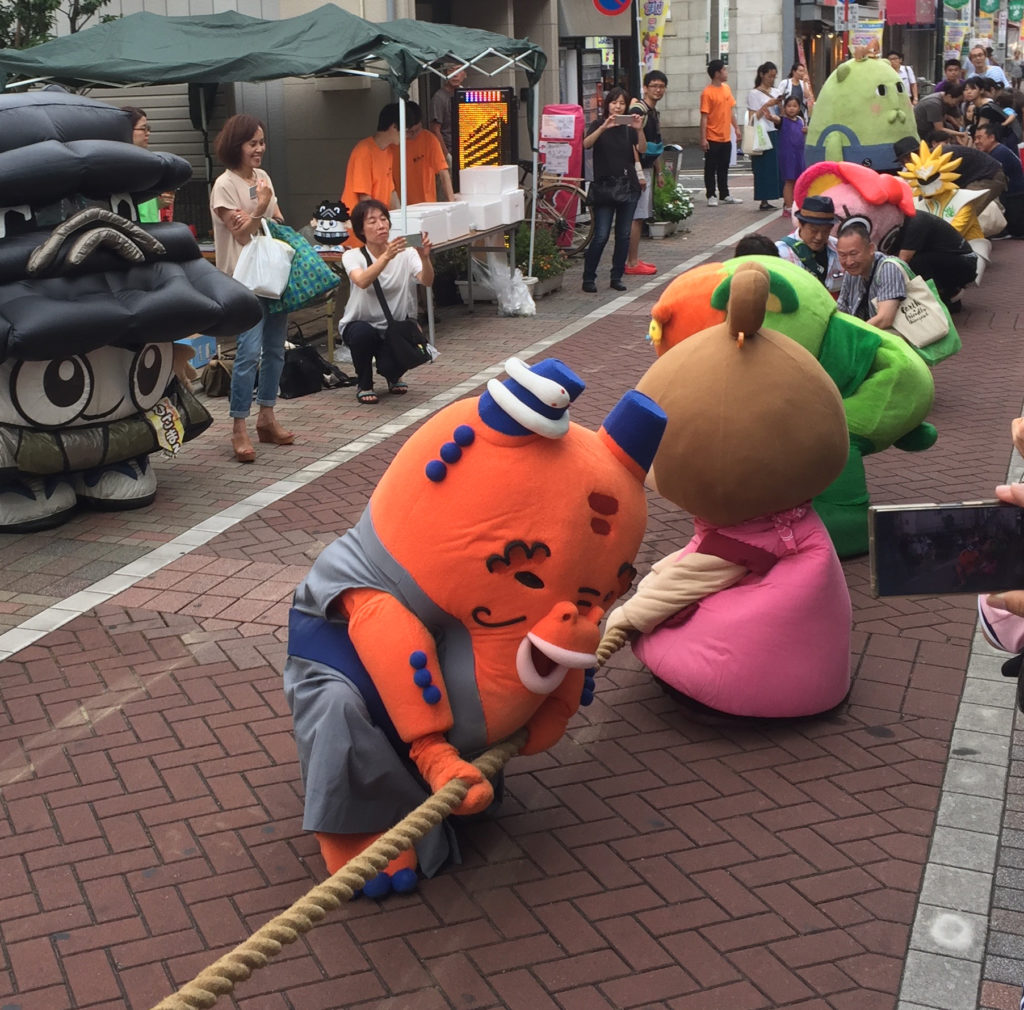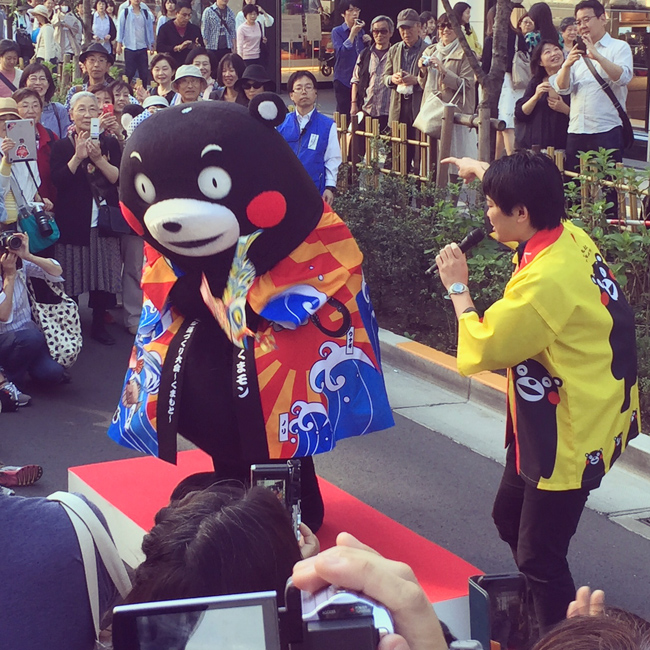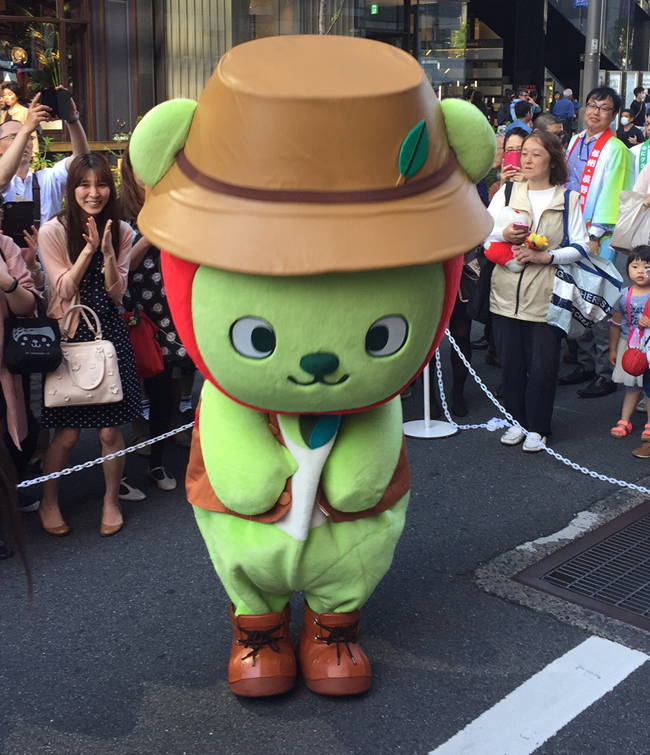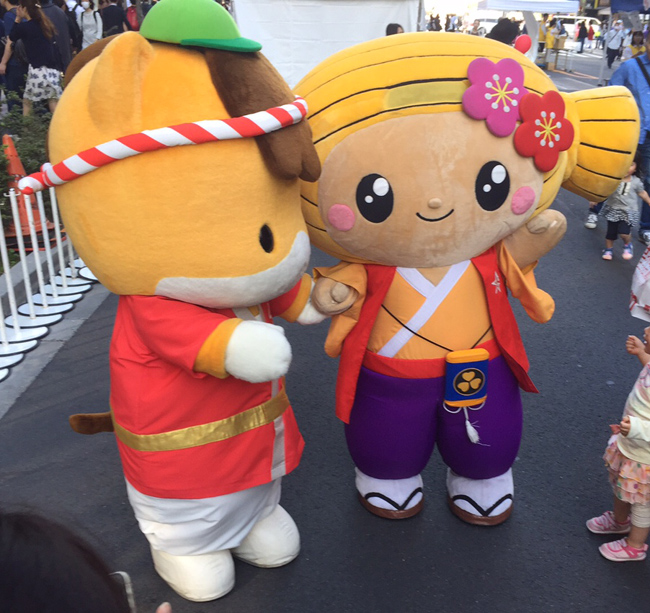In Japan, pharmaceutical companies almost always have mascots, so this weekend I went to the Japan Drugstore Show, a giant pharmaceutical trade show in the cavernous convention centre Tokyo Big Sight, in the hope of catching sight of a few cuddly characters. I was not disappointed!
Kero-chan and Koro-chan, the frog mascots for Kowa Pharmaceuticals since 2008, were present. Statues of these amiable amphibians can be spotted in pharmacies around the country. Kowa have always had a frog mascot of some kind since one first appeared on boxes of their hives medication in 1949.
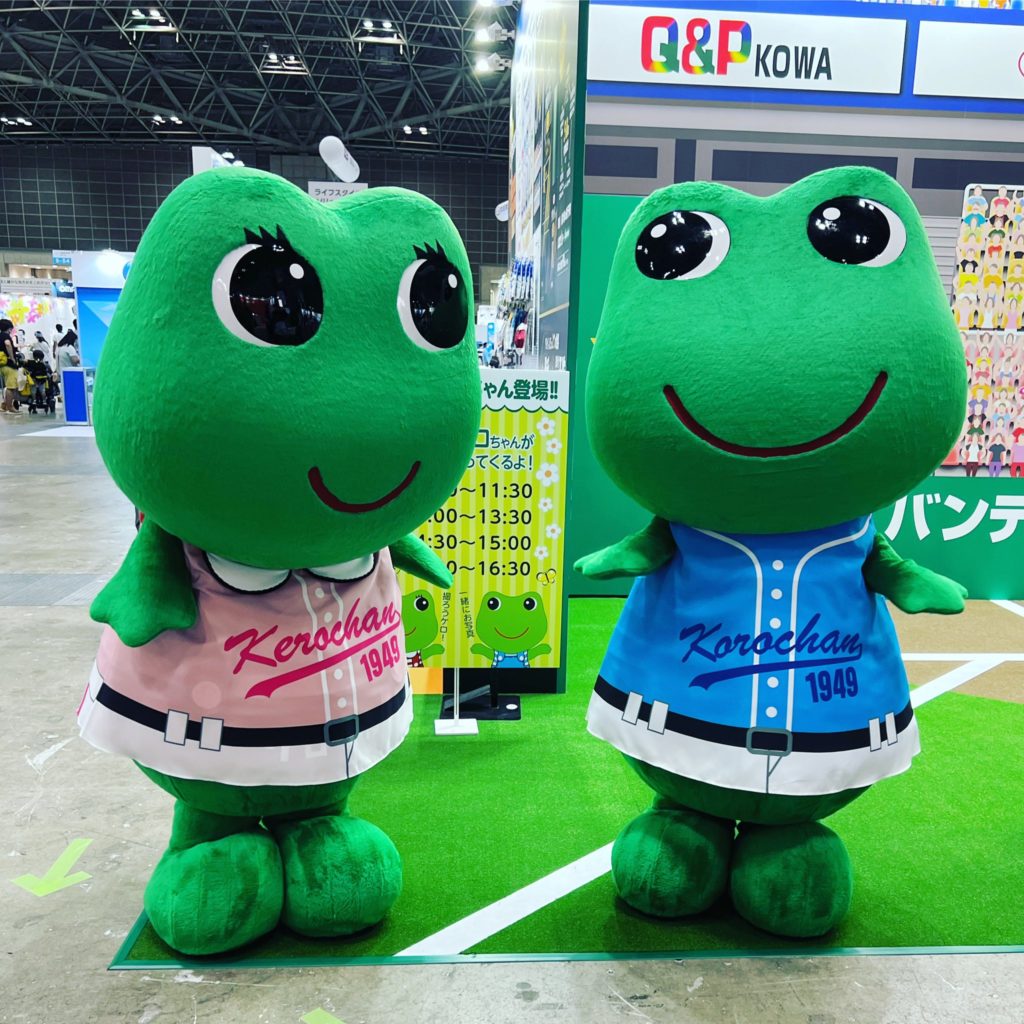
I also ran into a big white cat called NECO, the mascot for Hakugen Earth dehumidifiers.
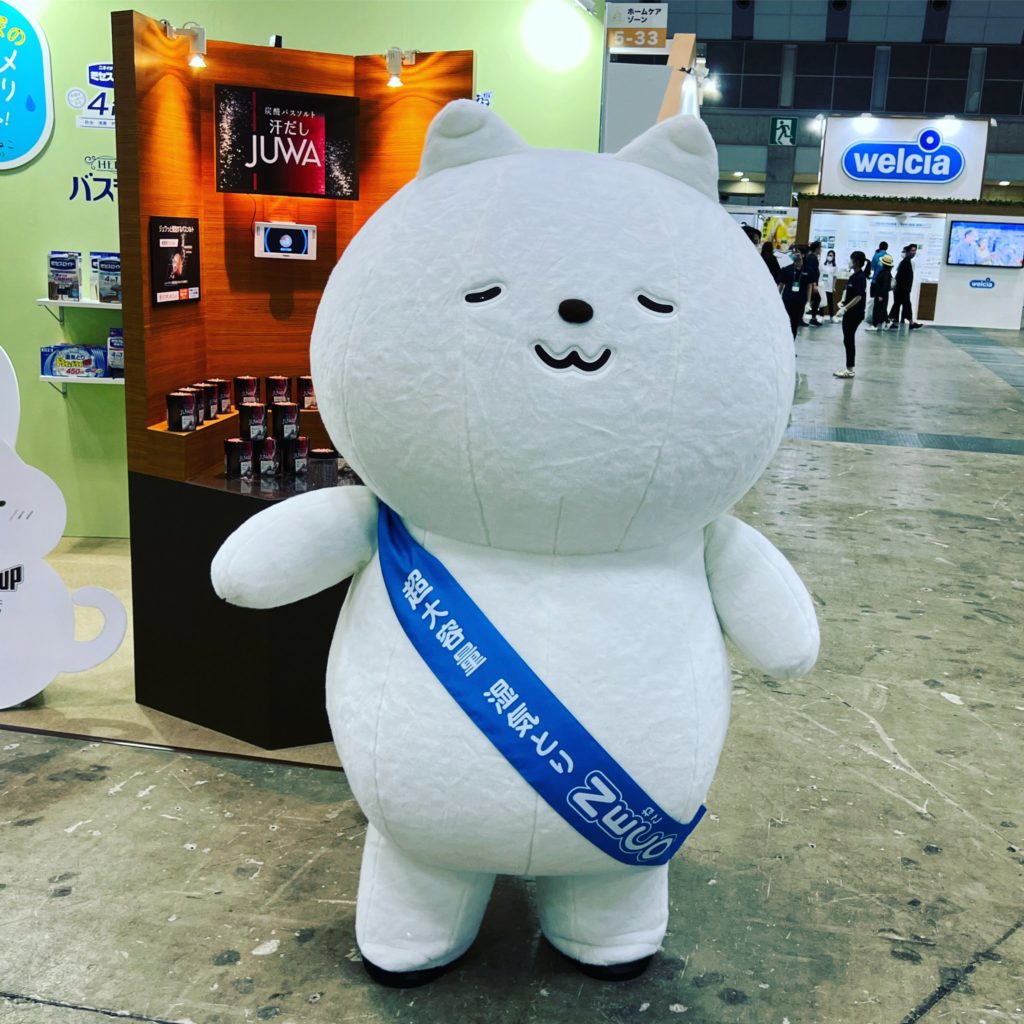
Ohta Inyan, the blue-haired cat mascot for the gastrointestinal medicine Ohta Issan, was giving a presentation about the various ingredients of the famous antacid.

Sato-chan and Satoko-chan, the colourful elephant mascots of Sato Pharmaceuticals, were also at the Japan Drugstore Show.
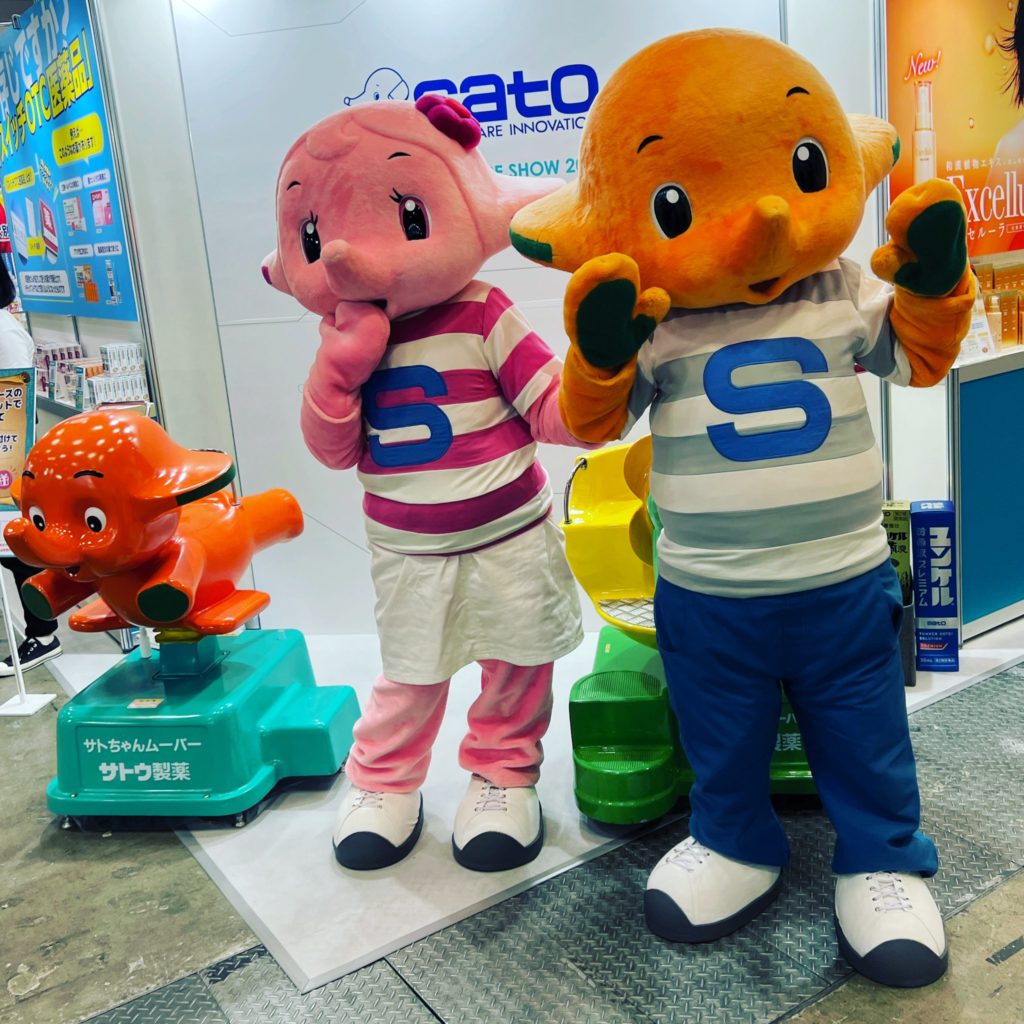
Sato-chan (the orange one) has been around since 1961. There’s even a mini museum inside a pharmacy in Ginza, Tokyo, dedicated to the pachyderm pair. It’s worth a visit, if you’re in the neighbourhood.
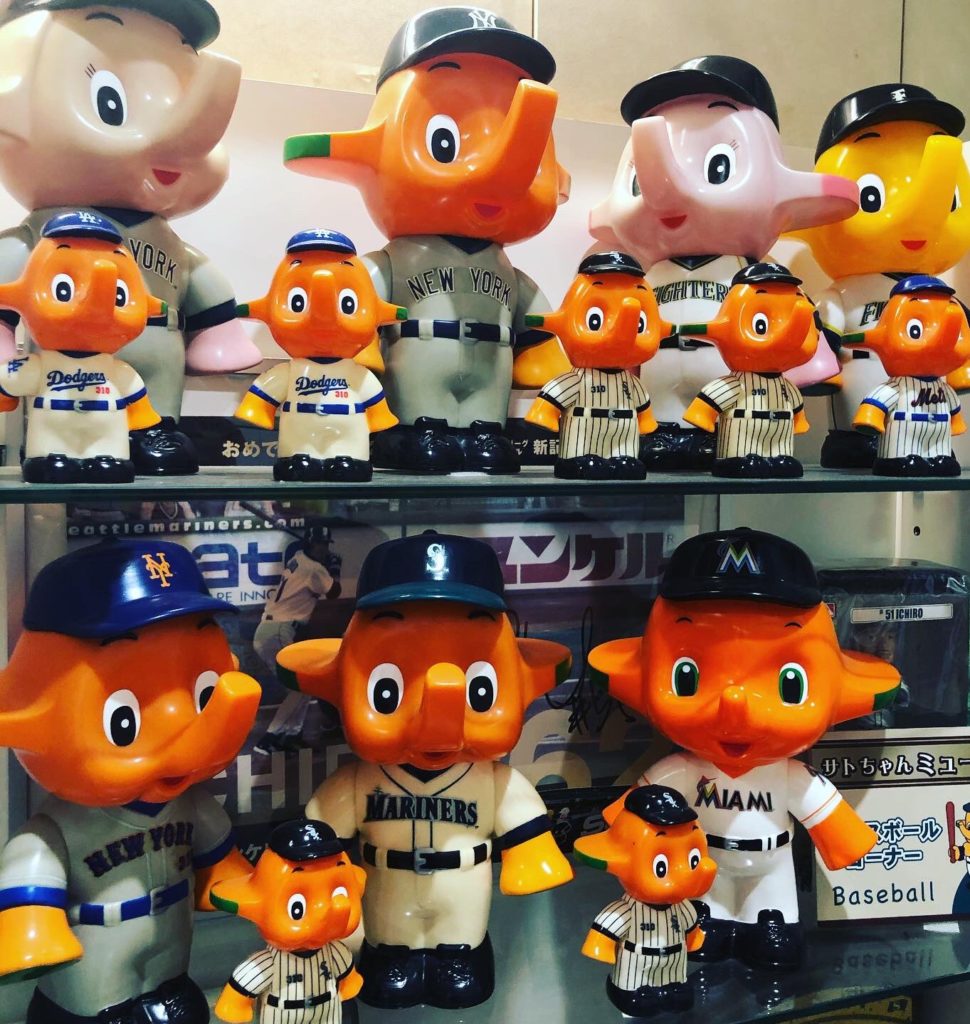
I had another encounter with pharmaceutical mascots last Autumn, at Kanda Myojin Shrine, where the mascots gather once a year to pray for people’s health.
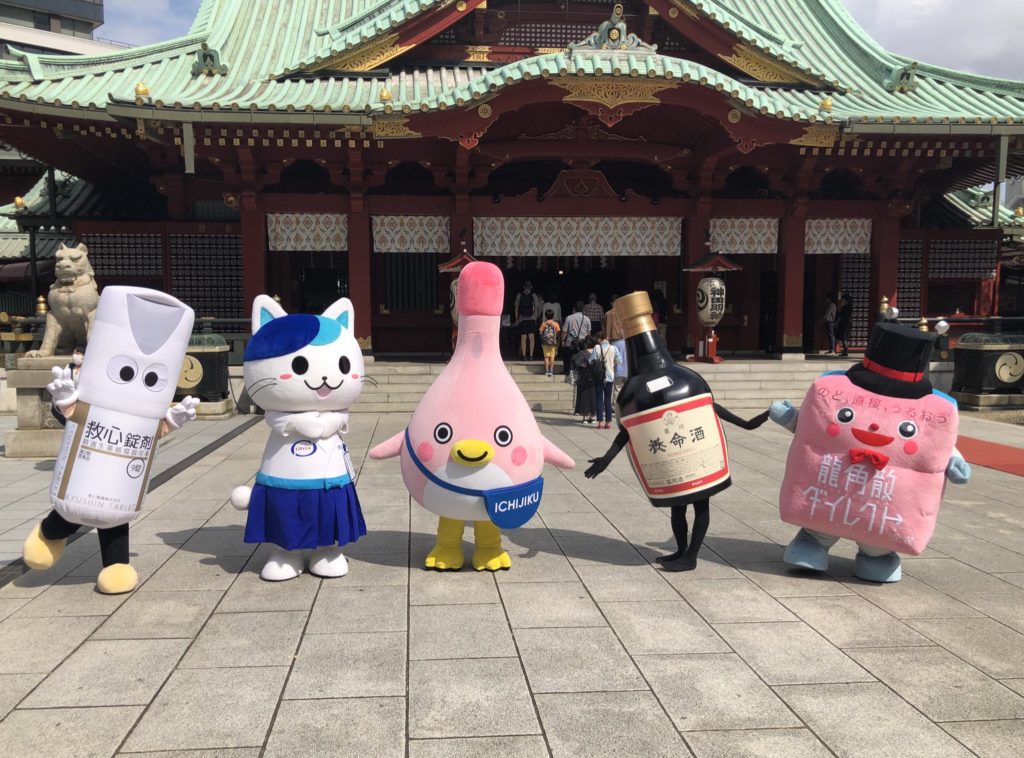
One popular mascot at the shrine was Bin-kun. Bin-kun is a bottle of Yomeishu, a medicinal tonic (14% proof) for physical fatigue. Bin-kun was wearing a facemask despite not having a nose or mouth.

Kan-chan, a pink penguin girl who has the misfortune of being shaped like an enema, is the mascot for Ichijiku enemas. I was very pleased to snap a photo of a priest from the shrine posing with Kan-chan. A unique sight indeed!
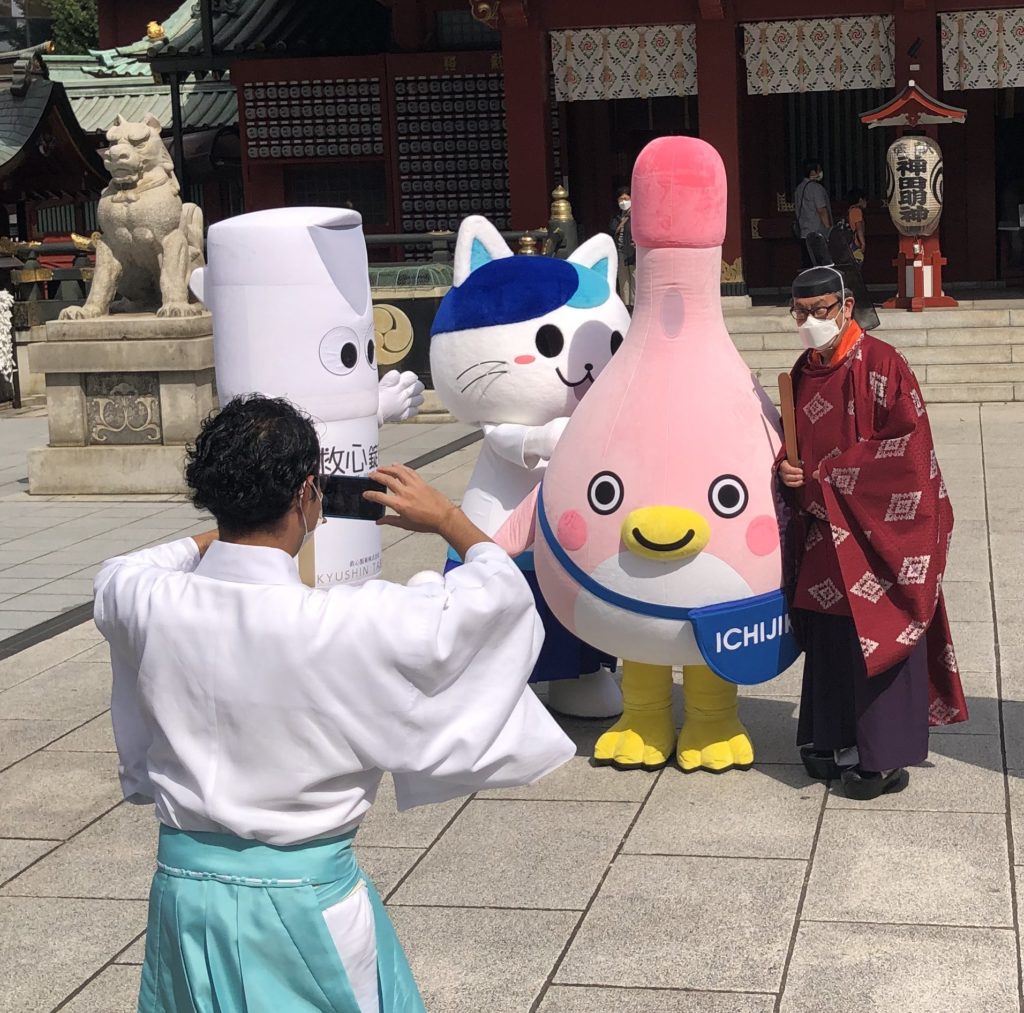
I’m glad these mascots are out there rooting for everyone’s health, and I hope to meet them all again.
